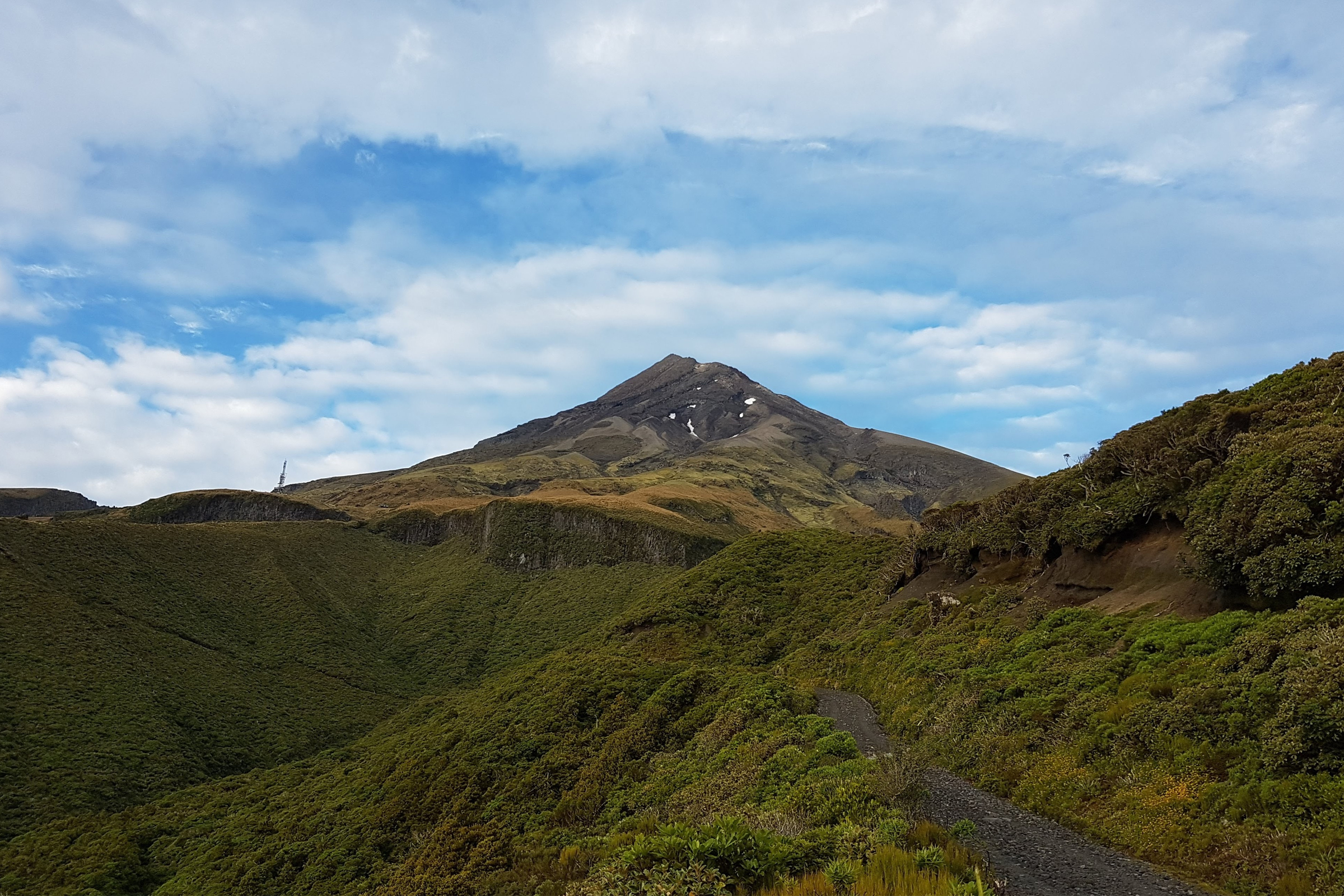Mount Taranaki is an iconic mountain in New Zealand. Without the appropriate gear, it can be extremely challenging and dangerous to hike to the summit. It’s best to pack appropriately. Here’s how.
Mt. Taranaki is an active stratovolcano, which essentially means it’s steeper than other volcanoes. Its last eruption occurred in 1854. The mountain is in Egmont National Park and is the second-highest peak on the north island of New Zealand.
The park is named after Mt. Egmont, another name for Mt. Taranaki. There are also several glaciers on the mountain, including the Manganui and Taranaki glaciers, home to a variety of glacier hiking and ice climbing.
Mt. Taranaki’s climate is variable. The weather can change quickly and unexpectedly. So it’s important to be prepared for all conditions when climbing the mountain.
I climbed Mt. Taranaki recently and have put together a quick gear list for those who have this hike on their bucket list.
Climbing Mt. Taranaki, New Zealand

Quick Facts on Mt. Taranaki
- Elevation: 8,261 feet (2,518 m)
- Hiking season: December-April
- Winter climbing: May-November
- Base to summit: 5-6 hours
- Summit to the base: 3-4 hours
My four friends and I spent the night prior in our van near the National Park Visitor Center, as 6 a.m. was our agreed wake-up time to begin our hike. We left just as it got bright, first hiking through a beautiful forest area — the last trees and shade for the rest of the climb. We chose to ascend via the Egmont route, one of the standard route choices.
Before long, we arrived at the Hongi Valley, which is made up of over 1,000 steps. Just when we believed it couldn’t get any harder! This guided us along the next 600 m.
Next up was the Scoria Slopes. These can be treacherous and icy in winter. This is where the poled route begins, and you really start to gain altitude. This section took about 1-2 hours.
The final 1.5-hour climb section is through a field of large, steep rocks. This section is called “The Lizard.” You’ll want to be mindful of how you’re traveling as a group, and watch for rockfall.
Penultimately, you’ll reach the “Summit Crater,” where snow sits year-round. This place of bliss is the last landmark before the summit. When snow is present, crampons and gaiters could be helpful in addition to poles.
Once atop the summit, we sat back to enjoy the breathtaking view of the Tasman Sea on one side, and the mountain ranges of the Central North Island on the other. It was like nothing I’d ever seen.
Is Climbing Mt. Taranaki Difficult?
Climbing Mt. Taranaki is a challenging hike. It’s not recommended for beginners.
The trail is steep and rocky in places, and the terrain can change from rocky to silty, or icy to muddy, quite quickly. The hike to the summit can be extremely tiring due to the steep gradient, plus altitude. Like other technical hikes, you’ll want to budget time for the descent and ensure enough time to return to the base before dark.
Note: The return back down via The Lizard and Scoria Slopes is extremely technical scrambling, with lots of loose rock. Poles and gloves can be your best friend on the downhill.

Mt. Taranaki Essential Gear
Backpack
Trekking Poles
Sturdy Footwear
Headwear/Sun Hat

First-Aid Kit
Gloves
Other Essentials










